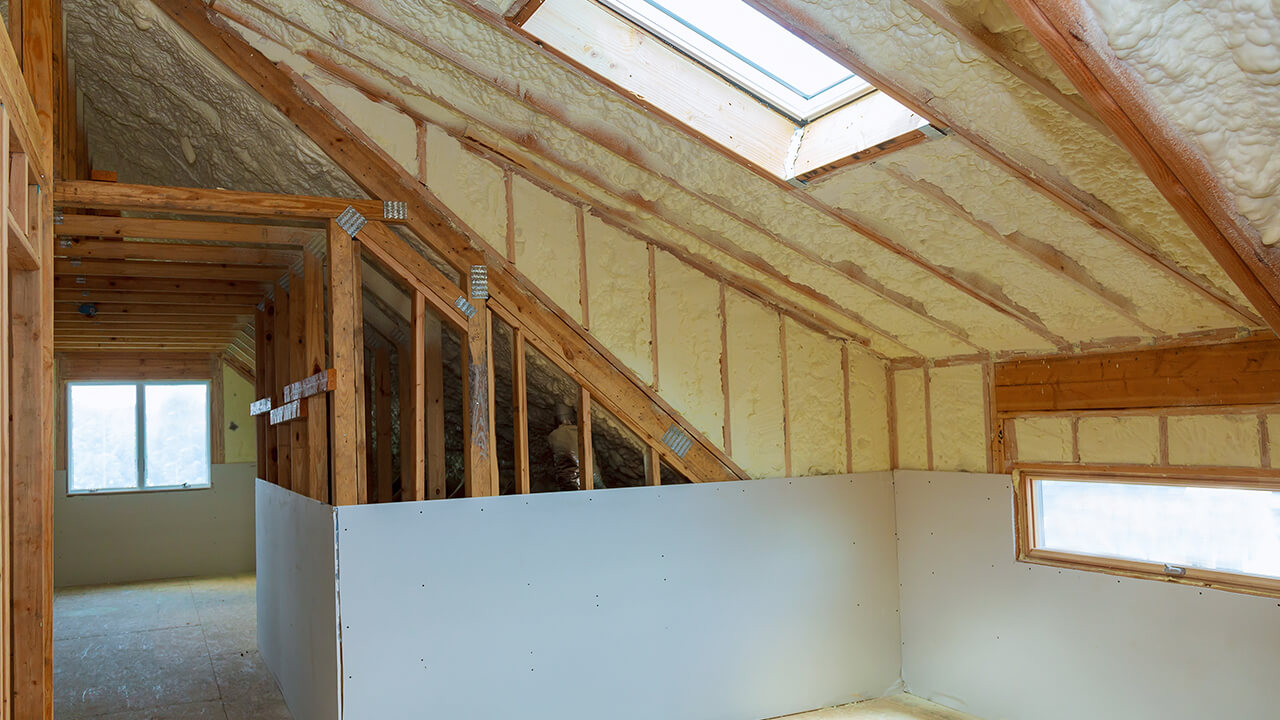How to insulate a usable attic?
The method of insulating a usable attic is related not only to the size of a given space. Before making the final choice, the technical condition of a roof cover and roof truss should be carefully assessed to ensure that their condition allows for thermal insulation works to be carried out. If the condition is satisfactory, you can plan the thermal insulation of a roof.
Most usable attics are largely vulnerable to errors in the application of thermal insulation material. Incorrect layering of insulating layers, lack of continuity of insulation material or insulation can lead to moisture, mould, fungus and even slow destruction of the wooden roof structure. Due to the above, choose a professionally trained construction team, even if it involves increasing the cost of thermal insulation
What to apply to insulate a roof in a usable attic?
Currently, there are many insulation materials on the construction market, which are characterized by high efficiency in thermal insulation processes. What to apply to insulate a roof in a usable attic? A popular solution involves, inter alia, mineral wool available in plates or mats, laid under or between rafters. Similar parameters are characterized by expanded polystyrene.
Recently, the polyurethane foam with excellent thermal insulation properties has gained in popularity. For insulation of an attic made of concrete, a closed-cell membrane is most often used, e.g. Purios H, with a low heat transfer coefficient. This product is of high density, higher than the open-cell foam, is mechanically strong and resistant to compression. In addition, the closed-cell foam has waterproofing properties due to its high diffusion resistance.
For the insulation of an attic ceiling made of wood, an open cell polyurethane foam is recommended, e.g. Purios E. It is a lightweight product with high insulating properties, which additionally provides acoustic insulation. Thermal insulation of a wooden ceiling consists in filling the open spaces with insulating material and then applying, for example, plasterboard panels.
Insulation of functional attic with PUR foam - advantages and disadvantages
In houses with a usable attic, the entire roof surfaces or parts of the roofs are insulated. Insulation of an attic ceiling is a suitable solution, as well. If you plan to adapt a space for housing purposes in the future, all you need to do is make additional insulation on the roofs.
In the case of a usable attic, roof areas should be insulated. Thermal insulation works are carried out when a house is in a raw-closed state, i.e. when windows and roofing are already installed. Appropriately trained authorized contractors apply PUR foam under and between rafters or on OSB boards attached to rafters or planking.
The polyurethane foam is extremely durable and stable. It provides long-lasting effects and benefits that you can enjoy for a long time of using the construction object.

 This website uses cookies. By using this website, you consent to the use of cookies in accordance with your browser settings.
This website uses cookies. By using this website, you consent to the use of cookies in accordance with your browser settings.